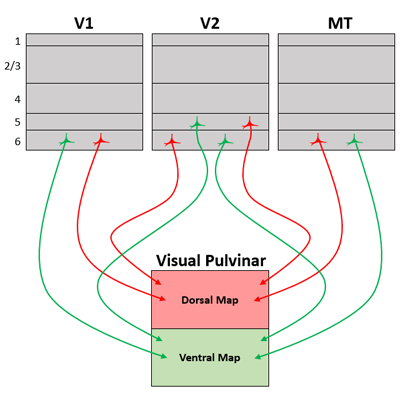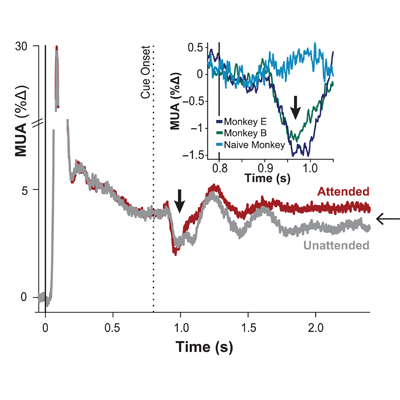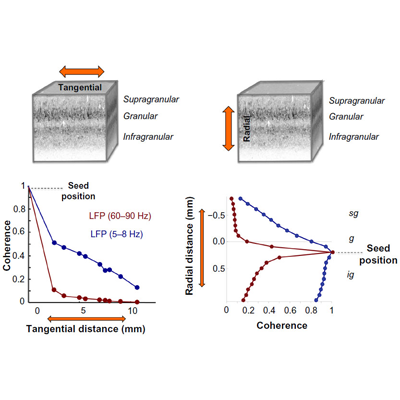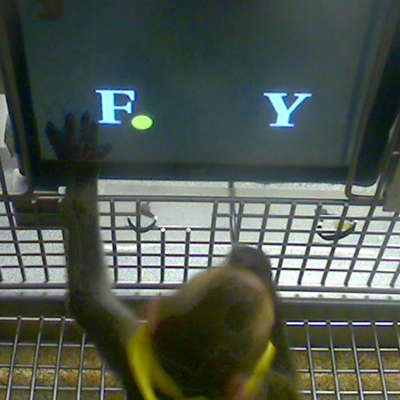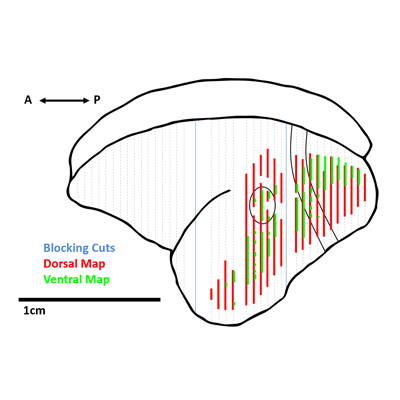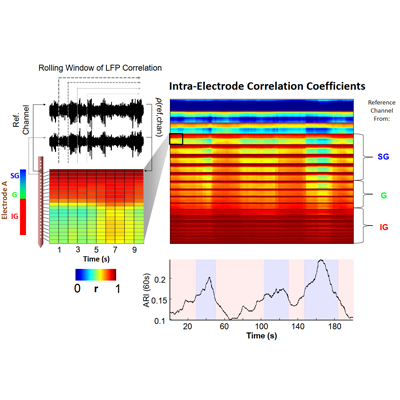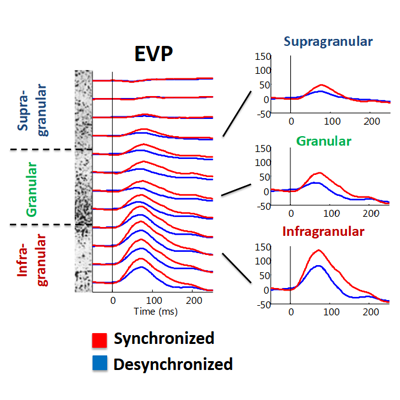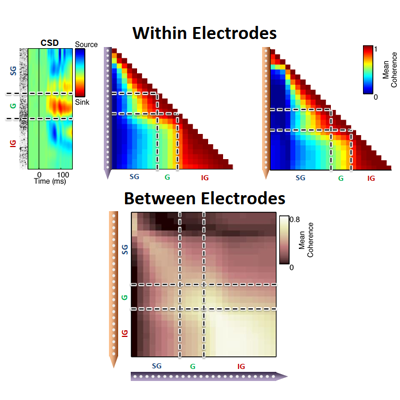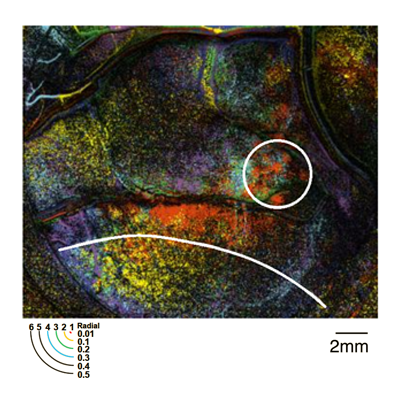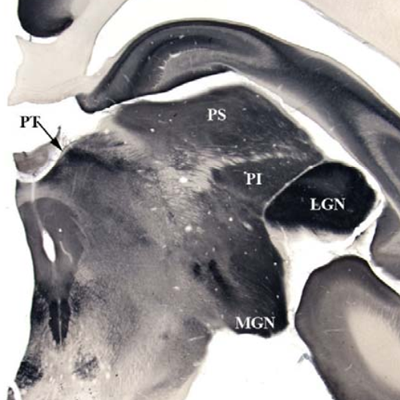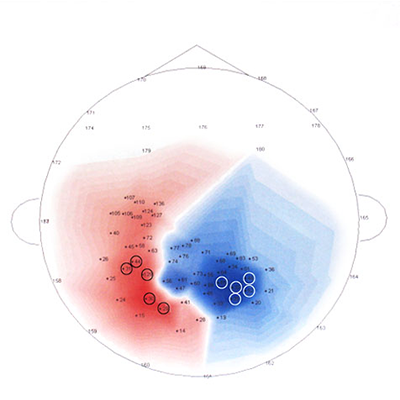Publications
Cortical projections to the two retinotopic maps of primate pulvinar are distinct
Moore B, Li K, Kaas JH, Liao CC, Boal AM, Mavity-Hudson J, Casagrande VA. (2018)
Moore B, Li K, Kaas JH, Liao CC, Boal AM, Mavity-Hudson J, Casagrande VA. (2018)
The galago visual pulvinar includes two nuclei with distinct, but mirrored retinotopic maps; one dorsal and one ventral. Retrograde tracers injected in each nucleus produced similar and distinct patterns of labeling across visual areas: notably layer 5 pyramidal neurons in V2 and layer 6 neurons in V1, V2, and MT.
Spiking Suppression Precedes Cued Attentional Enhancement of Neural Responses in Primary Visual Cortex
Cox MA, Dougherty K, Adams GK, Reavis EA, Westerberg JA, Moore B, Leopold DA, Maier A. (2017)
Cox MA, Dougherty K, Adams GK, Reavis EA, Westerberg JA, Moore B, Leopold DA, Maier A. (2017)
Attending to a visual stimulus increases its detectability. We found that preceding attentional enhancement in macaque V1 there was a sharp, transient decline in spiking following presentation of an attention-guiding cue.
Anisotropy of ongoing neural activity in primate visual cortex
Maier A, Cox MA, Dougherty K, Moore B, Leopold DA. (2014)
Maier A, Cox MA, Dougherty K, Moore B, Leopold DA. (2014)
This review compares and contrasts the spatial profile of neural activity coherence across both tangential and radial cortical dimensions with a focus on studies of ongoing local field potential data obtained simultaneously from multiple sites in the primary visual cortex.
Symbol addition by monkeys provides evidence for normalized quantity coding
Livingstone MS, Pettine WW, Srihasam K, Moore B, Morocz IA, Lee D. (2014)
Livingstone MS, Pettine WW, Srihasam K, Moore B, Morocz IA, Lee D. (2014)
Rhesus macaques were taught a rudimentary symbolic addition task with numerals ranging from 0-26. Analysis of behavioral results indicated neither a linear nor a compressed scale, but rather a dynamically shifting, relative scaling of numeration.
Conference Presentations
Cortical projections to the two retinotopic maps of primate pulvinar are distinct
Moore B, Boal A, Mavity-Hudson JA, Liao C, Kaas JH, Casagrande VA. (2017)
Moore B, Boal A, Mavity-Hudson JA, Liao C, Kaas JH, Casagrande VA. (2017)
The visual pulvinar complex of the galago is organized dorso-ventrally into two almost mirrored representations of visual space. Retrograde tracer injections into these two maps revealed that they receive projections from distinct populations of layer 5 and 6 pyramidal cells in both striate and extrastriate cortices.
Does V3 Represent a Unique Target of the Koniocellular Pathway?
Moore B, Boyd JD, Roy O, Mavity-Hudson J, Casagrande VA (2016)
Moore B, Boyd JD, Roy O, Mavity-Hudson J, Casagrande VA (2016)
Retrograde tracer injections in the poorly understood galago homologue of macaque area V3 label patches of cells in V1. These labeled neurons resided within the CO blobs in layer 3 -- the same cortical layer that the K pathway projects to suggesting a possible koniocellular pathway to V3.
A comparison of the synaptic input to visual areas V1 and V2 from primate pulvinar
Moore B, Li K, Mavity-Hudson JA, Casagrande VA. (2015)
Moore B, Li K, Mavity-Hudson JA, Casagrande VA. (2015)
Projections from the thalamus either drive or modulate the flow of information to cortex. Where pulvino-cortical projections fall within this framework is unknown. Based on fluorescent and electron microscopy, we propose that projections to V2 drive while those to V1 modulate cortical activity.
Resting state correlations in visual cortex reflect fluctuations of cortical arousal
Moore B, Cox MA, Dougherty K, Young MS, Maier A. (2014)
Moore B, Cox MA, Dougherty K, Young MS, Maier A. (2014)
Resting state LFP coherence is compartmentalized along the laminar dimention and rapidly decreases with distance. We examined how this property changes over time as a function of arousal. Increases in arousal result in a decrease in the resting state correlations within the V1 columnar microcircuit.
Laminar profile of state-dependent visually evoked responses in primate visual cortex
Moore B, Cox MA, Dougherty K, Young MS, Maier A. (2013)
Moore B, Cox MA, Dougherty K, Young MS, Maier A. (2013)
The transition between desynchonized and synchronized states of arousal has been shown to affect visual processing as early as V1. We examined these effects on the laminar profile of macaques and found that cortical arousal inversely correlates with V1 response magnitude.
LFP Coherence as a function of laminar depth and lateal distances in macaque visual cortex
Cox MA, Moore B, Dougherty K, Young MS, Maier A. (2013)
Cox MA, Moore B, Dougherty K, Young MS, Maier A. (2013)
To better understand the pattern of LFP coherence within a volume of cortex, these correlations were examined in the resting macaque. We found that coherence drops as both a function of lateral and radial distance, however, deeper cortical layers remain more coherent than superficial layers.
Functional architecture of the foveal confluence in macaque visual cortex
Moore B, Chen M, Lu H, Roe A. (2013)
Moore B, Chen M, Lu H, Roe A. (2013)
The fovea is crucial for providing high spatial acuity and is key to natural visual attentional behavior. Despite its importance, however, surprisingly little is known about its cortical representation. Here we demonstrate how optical imaging techniques can be used to study this unique location in cortex.
Other Projects
Atlas of the bush baby thalamus
Mavity-Hudson JA, Godlove DC, Marion RT, Purushothoman G, Casagrande VA. (2008)
Mavity-Hudson JA, Godlove DC, Marion RT, Purushothoman G, Casagrande VA. (2008)
Studying the thalamus is difficult enough without having to navigate blindly - and now you don't need to! This is the current version of the atlas although I've been working to add to it in my spare time. It is hosted here in loving memory of Prof. Vivien Casagrande.
The M170 is not size invariant
Morash V, Moore B, Sinha P (2009)
Morash V, Moore B, Sinha P (2009)
A typical person is able to identify a face approximately 170ms after viewing it. The neuro-magnetic corelate of face perception, known as the M170, was demonstrated as having significantly shorter latencies for larger images. Although this finding was never published, the manuscript is included here in loving memory of my coauthor, Valerie Morash.
